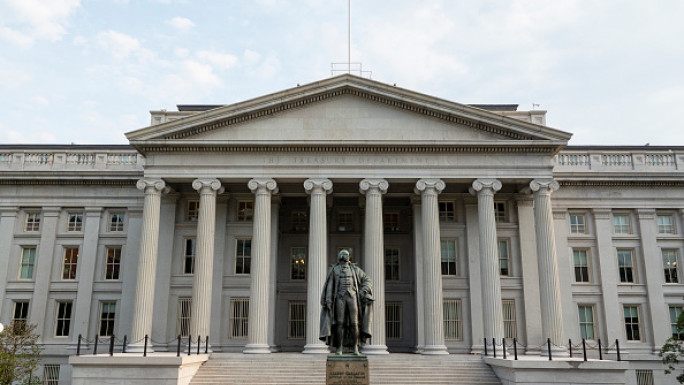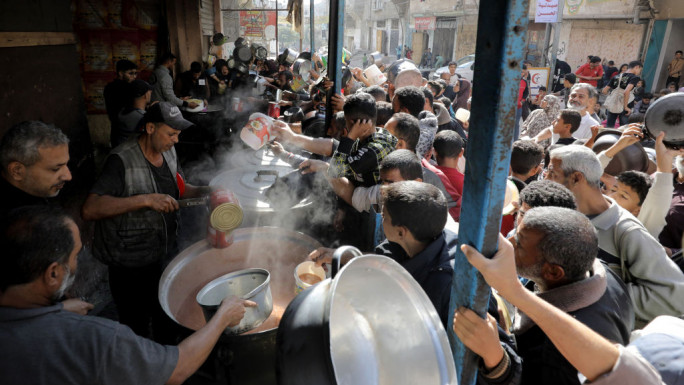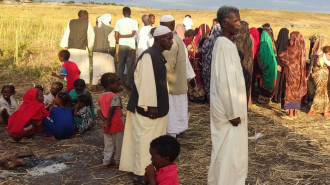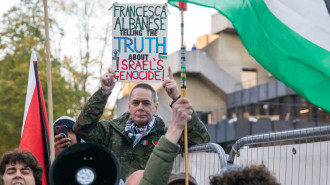'We're not counted as a community': How the US census affects Arab voting rights
According to the latest census, the city of Dearborn is more than 90 percent white. This might come as a surprise to anyone who has spent any time in what is dubbed the Arab capital of North America, though it comes as no surprise to local residents who have filled out the census.
This odd demographic breakdown might sound comical, until one realises that the lack of a category for those of the Middle East and North Africa (MENA) origin, giving white as the only option, has an important impact on the community’s voting rights.
"Until we use language that everyone knows, it doesn’t get on people’s radars. They’re ensuring they have enough voters in their district to get re-elected. It’s clear it’s not a democracy"
As things stand, it’s the politicians who choose the voters, rather than the voters choosing the politicians. If that sounds undemocratic, it’s because it is.
“It’s elected officials choosing their voters. Until we use language that everyone knows, it doesn’t get on people’s radars. They’re ensuring they have enough voters in their district to get re-elected. It’s clear it’s not a democracy,” Rima Meroueh, Director, National Network for Arab American Communities at the Arab Community Center for Economic and Social Services (ACCESS) tells The New Arab.
One thing that struck her in conversations with community members about redistricting has been their reactions about this arguably undemocratic aspect of US politics, particularly among those who have fled dictatorships.
“As an organisation, we represent people who have fled these countries. They’re here to live their lives in a productive way. They should be allowed to be part of the process,” she says. “Right now, they’re not even recognised.”
On the other hand, she says, “If these lines are redrawn, then communities can choose who represents them and their concerns.”
Redistricting is America’s practice of redrawing the boundaries of electoral maps every 10 years following the completion of the US census. The federal government requires equal populations of the districts and forbids discrimination based on race or ethnicity. In reality, however, the US has a long history of redrawing electoral maps for their own political purposes. What is relatively new is communities recognising and working to change
Michigan is one of many states across the US where gerrymandering, or districts drawn by officials to help themselves get elected, has maintained the political status quo. Meroueh hopes an independent commission of diverse community members can help change that.
"As an organisation, we represent people who have fled these countries. They’re here to live their lives in a productive way. They should be allowed to be part of the process"
“The census data is used as a tool for map drawing. Census data can be used to say: here’s where you have this community. it’s how [electoral] district lines are drawn,” Meroueh explains. “We’re not counted as a community. We’re left out of the map process.”
To compensate for this lack of support, the community will sometimes commission its own surveys or studies to understand the makeup of the population. This costs money that they would rather spend on other services.
To try to change what they see an unfair district lines, they are helping develop an independent commission that they say will be more representative of the area’s diverse communities in what are called “communities of interest.”
This affects everything from voting representation to federal funding for a range of services and infrastructure projects. This also includes the Biden administration’s Justice 40 program, according to the White House website, a “promise to deliver at least 40 percent of the overall benefits from Federal investments in climate and clean energy to disadvantaged communities.”
Meroueh emphasises that their aim is not to flip the power balance in favour of Arabs, but instead to be more inclusive of everyone.
“We’re not trying to create power for the Arab community over other communities. We’re creating a unity map so that different communities can have power,” she says. The independent commission would include 12 representatives.
“Right now, it favours elected officials. We want it to favour residents. If you look at the map now, it’s really convoluted. One of the requirements of the Michigan independent redistricting commission is to make the map cleaner. If you see a sliver going up into another district, you know there’s something up with that.”
The map will be submitted soon. Meanwhile, Arab American leaders continue to work on community engagement.
This community organising is much easier said than done. Unlike getting out the vote, the issue of redistricting requires continuous involvement, particularly as it is related to a census that is already unrepresentative of a significant community.
“Immigrant communities are hard to count,” Illinois-based Bassem Kawar, a board member of the Arab American Action Network, pointing to dealing with multiple languages and often a mistrust in government, tells The New Arab.
“The mistrust in government came from four years of abuse,” he says. "The last thing people want is a strong knocking on their door asking questions. The strategy is that we were a coalition of trusted messengers.”
In the end, they got a high turn-out, though the community members did not get the MENA category they had hoped for, which greatly skews the population data for areas with high Arab populations.
“The mistrust in government came from four years of abuse... The last thing people want is a strong knocking on their door asking questions”
“It’s alarming for a city like Dearborn. I’m hopeful we’ll have some idea of what the city actually looks like,” Matt Jaber Stiffler, research and content manager at Arab American National Museum and ACCESS, tells The New Arab.
He notes that more detailed census data on population subcategories is expected to be released in December, which should help give a fuller picture of Dearborn’s demographic makeup. For now, what we do know is that the city gained 10,000 new residents between 2010 and 2020, and since 2015 nearly 30 percent were foreign born and over 50 percent were speak a language other than English at home. Advocates believe that they are most likely Arabs who are not being counted as such.
Stiffler says, “If you rely on the census data alone, you won’t get a portrait of what the MENA community looks like. There are a lot of good people working to fix that.”
Brooke Anderson is The New Arab's correspondent in Washington DC, covering US and international politics, business, and culture.
Follow her on Twitter: @Brookethenews





 Follow the Middle East's top stories in English at The New Arab on Google News
Follow the Middle East's top stories in English at The New Arab on Google News


